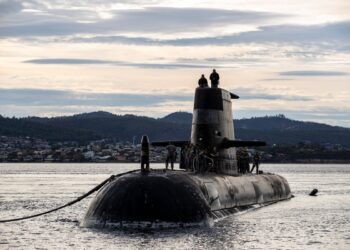**Location and Event**
On **Wednesday**, **China** commissioned its latest aircraft carrier, **Fujian**, at a naval base on **Hainan island**. The event was reported by state media on **Friday** and attended by the country’s top leader, **Xi Jinping**.
**Military Significance**
The Fujian, China’s third aircraft carrier, is notable as the first to be both designed and built domestically. It represents a significant part of **Xi Jinping**’s vision for a modern, formidable military by **2035**, aiming for a “world-class” force capable of competing with the **United States**.
**Strategic Aspirations**
The introduction of the Fujian adds to China’s ambition to extend its naval power beyond coastal waters. Experts assert that aircraft carriers are central to China’s military strategy, allowing it to project influence in broader territories, particularly the **Indo-Pacific region**. There are concerns about potential confrontations involving **Taiwan**, as the carrier could facilitate military operations near the **Second Island Chain**, affecting U.S. naval responses.
**International Reaction**
The commissioning of Fujian has raised alarms in Japan. **Minoru Kihara**, Japan’s chief cabinet secretary, indicated that China’s military enhancements occur with little transparency and pose threats that Japan is closely monitoring. The possibility of a Chinese blockade or invasion of Taiwan remains a primary security concern.
**Technical Innovation**
Unlike its predecessors, the Fujian utilizes an **electromagnetic launch system**, enhancing its operational capabilities. This system allows for effective deployment of heavier aircraft, such as the **KJ-600** and **J-35** fighters, thereby improving operational range and effectiveness compared to older ski-jump carriers.
**Comparison with U.S. Navy**
Despite advancements, China’s navy still trails the U.S. in several aspects. The U.S. operates **11** nuclear-powered carriers, which provide superior range and capacity for operations. Additionally, the U.S. has a more developed network of bases and logistical support, crucial for extensive naval operations.
**Challenges Ahead**
Operational readiness for China’s new military assets remains unproven, given its lack of combat experience since **1979**. Analysts urge caution in interpreting military capabilities, suggesting that the emphasis on modernization is part of a broader strategy to enhance China’s global influence and deter rivals.
**Future Developments**
Looking ahead, China is actively expanding its naval capabilities and is reportedly constructing another carrier, indicating ongoing strategic military development and a commitment to closing the gap with established naval powers like the United States.













